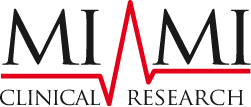The Importance of Regulatory Approval in Drug Development
The Importance of Regulatory Approval in Drug Development
In the high-stakes world of clinical research, regulatory approval stands as the final—and most critical—milestone before a new drug can reach patients. While scientific innovation drives the discovery of new compounds, and clinical trials test their safety and efficacy, it is the regulatory process that validates a drug’s readiness for public use. Approval from agencies like the U.S. Food and Drug Administration (FDA) or the European Medicines Agency (EMA) ensures that only treatments with a favorable benefit-risk profile make it to the market.


What Is Regulatory Approval?
Regulatory approval refers to the formal authorization granted by government health agencies that allows a drug or therapy to be legally marketed and prescribed. This decision is based on extensive evidence gathered through preclinical research, phases I–III of clinical trials, and a detailed review of the product’s manufacturing process, labeling, and safety monitoring plans.
In the U.S., this responsibility is overseen by the Center for Drug Evaluation and Research (CDER), a division of the FDA. The CDER reviews applications such as the New Drug Application (NDA) or Biologics License Application (BLA) and makes a decision based on scientific data and public health needs.
Why Regulatory Approval Matters
1. Ensures Patient Safety
First and foremost, regulatory approval exists to protect patients. Agencies perform thorough assessments to ensure the drug has been tested under stringent conditions and that any potential side effects are well understood and manageable. Without this gatekeeping process, untested or harmful drugs could reach the market, putting millions at risk.
2. Confirms Clinical Efficacy
It’s not enough for a drug to be safe—it must also be effective. Regulatory authorities require statistically significant evidence that the treatment works as intended. This is especially important in diseases where placebo effects can be high or where multiple treatments already exist.
3. Builds Public Trust
Patients, healthcare providers, and insurance companies rely on regulatory bodies to serve as impartial assessors of a drug’s value. When a drug is approved, it carries a level of credibility and confidence that supports its use in clinical practice and acceptance within healthcare systems.


The Approval Process: A Rigorously Structured Path
The journey to approval typically includes:
- Preclinical Testing: Lab and animal studies to assess basic safety.
- Clinical Trials (Phases I–III): Human studies that evaluate safety, dosage, and efficacy.
- Regulatory Submission: Filing an NDA or BLA, which can include thousands of pages of data.
- Review and Advisory Committees: Expert panels may review the data and provide recommendations.
- Labeling Negotiation and Post-Marketing Plans: Approval includes how the drug should be labeled and monitored after launch.
This process can take several years, and only a fraction of drug candidates ever make it to the approval stage.
Accelerated and Conditional Pathways
In certain cases, regulatory bodies offer expedited pathways for drugs that address unmet medical needs or demonstrate early evidence of significant benefit. These include:
- Fast Track Designation
- Breakthrough Therapy Designation
- Accelerated Approval
- Priority Review
These programs can shorten the development timeline and provide early access to potentially life-saving treatments, especially in areas like oncology, rare diseases, or pandemics.


Global Regulatory Considerations
While the FDA is perhaps the most well-known regulatory body, other regions have their own agencies, including:
- EMA (Europe)
- MHRA (UK)
- PMDA (Japan)
- TGA (Australia)
Each agency has unique requirements, but most follow International Council for Harmonisation (ICH) guidelines to ensure consistency and global standards in drug development.
Post-Approval Monitoring: The Final Frontier
Approval is not the end of the regulatory journey. Drugs must undergo post-marketing surveillance (Phase IV studies) to monitor long-term safety and real-world effectiveness. Adverse event reporting systems and mandatory risk evaluation and mitigation strategies (REMS) ensure ongoing patient protection.
In some cases, drugs may be withdrawn from the market post-approval if new risks are identified. This highlights the importance of continued regulatory oversight, even after a product is launched.


Conclusion
Regulatory approval is the cornerstone of modern drug development. It ensures that only safe, effective, and well-characterized therapies become available to the public. Beyond being a legal requirement, it’s a critical trust-building mechanism that protects patients, upholds scientific standards, and guides the responsible advancement of healthcare. As the medical landscape evolves, so too must regulatory systems—balancing speed with rigor, innovation with safety, and access with assurance.

